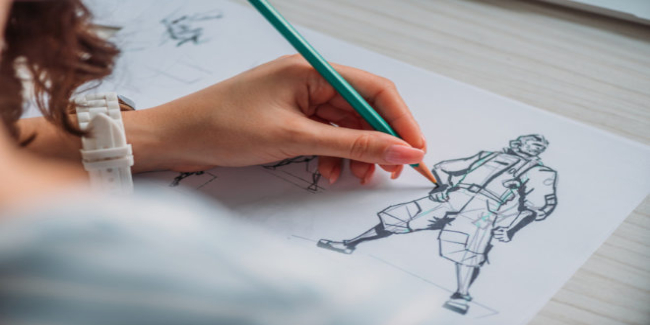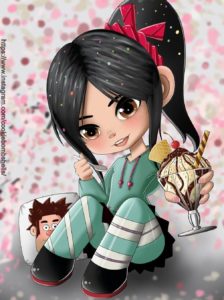Blog / What is Character designing and who are Character designers?

Wednesday, 30 Mar 2022
What is Character designing and who are Character designers?
Introduction to Character Design:
Character design is the development of new, original characters for a computer or traditional illustration or animation. Character designers work from a character definition that might be part of a story outline or script for a film, TV series, video game, graphic novel, or book illustration. They produce the initial designs and set the tone for key imagery within a film or game.
Role of a Character Designer:
Graphics and animation character designers visualize and create the look of the individual characters. They work from descriptions given to them by the client. Character designers conduct research on character anatomy and appropriate fashion styles to guide their creations. This role heavily depends on strong drawing skills, with characters being crafted either on paper or digitally.

Character designers produce multiple design options for a single character, offering a range of visual interpretations. These designs are then presented to the director, who provides feedback. The designer refines the character based on this input until the final design meets the director’s vision.
A top-tier character designer has a keen eye for nuanced human expressions and a profound grasp of a character’s story and essence. Crafting memorable characters often begins with fundamental shapes and concepts. The designer’s role is to envision the character from various angles, capturing their action, anatomy, and distinctive expressions to breathe life into them.

At its core, a character designer transforms abstract ideas into vibrant, life like visuals. They excel at creating designs that animate seamlessly and resonate with audiences, whether in animation, video games, or other media. Strong drawing skills and a unique personal style are crucial in developing compelling concept art. Effective communication of a character’s personality through facial expressions and body language is a key part of their work. Character designers must adeptly interpret direction, visualize abstract concepts, and clearly convey their creative ideas.
Tools and Techniques in Character Design:
Character designers use a mix of traditional tools like pencil, paper, and ink, as well as digital tools and software to bring their concepts to life. Traditional methods allow for quick sketching and brainstorming, while digital platforms offer precision and versatility in refining and finalizing designs. The choice between these tools typically depends on the specific requirements of the project, whether it involves 2D or 3D animation, illustrations, or interactive media, ensuring the best medium is used to achieve the desired artistic vision.
Challenges and Rewards in Character Design:
The field of character design is both challenging and rewarding. It requires years of practice and dedication, offering creative freedom and significant value across various industries, including animation, video games, illustration, and advertising.
Career Path and Opportunities:
Character design opens doors to various career paths, including roles in animation studios, video game companies, advertising agencies, and more. Professionals in this field often pursue continuous learning and specialization to stay updated with industry trends and technologies.
Conclusion
In conclusion, character design stands as the vibrant heartbeat of storytelling across various entertainment mediums, from film to gaming and beyond. It’s a realm where creativity meets technical skill, giving birth to characters that linger in the minds and hearts of audiences long after the credits roll.
If you’re a budding character designer looking to hone your craft and delve deeper into this captivating art form, consider exploring the Character Designer course offered by Dreamzone. From mastering anatomy to refining your digital art skills, this course provides the perfect platform to unleash your creativity and embark on an exciting journey in the world of character design.
Frequently Asked Questions

Corporate Headquarters
No. 25, Dr. Radhakrishnan Salai, Mylapore,
Chennai - 600 004, Tamil Nadu, India.
+91 98843 85048
Flagship Events
Trending Courses
Fashion Design
Interior Design




